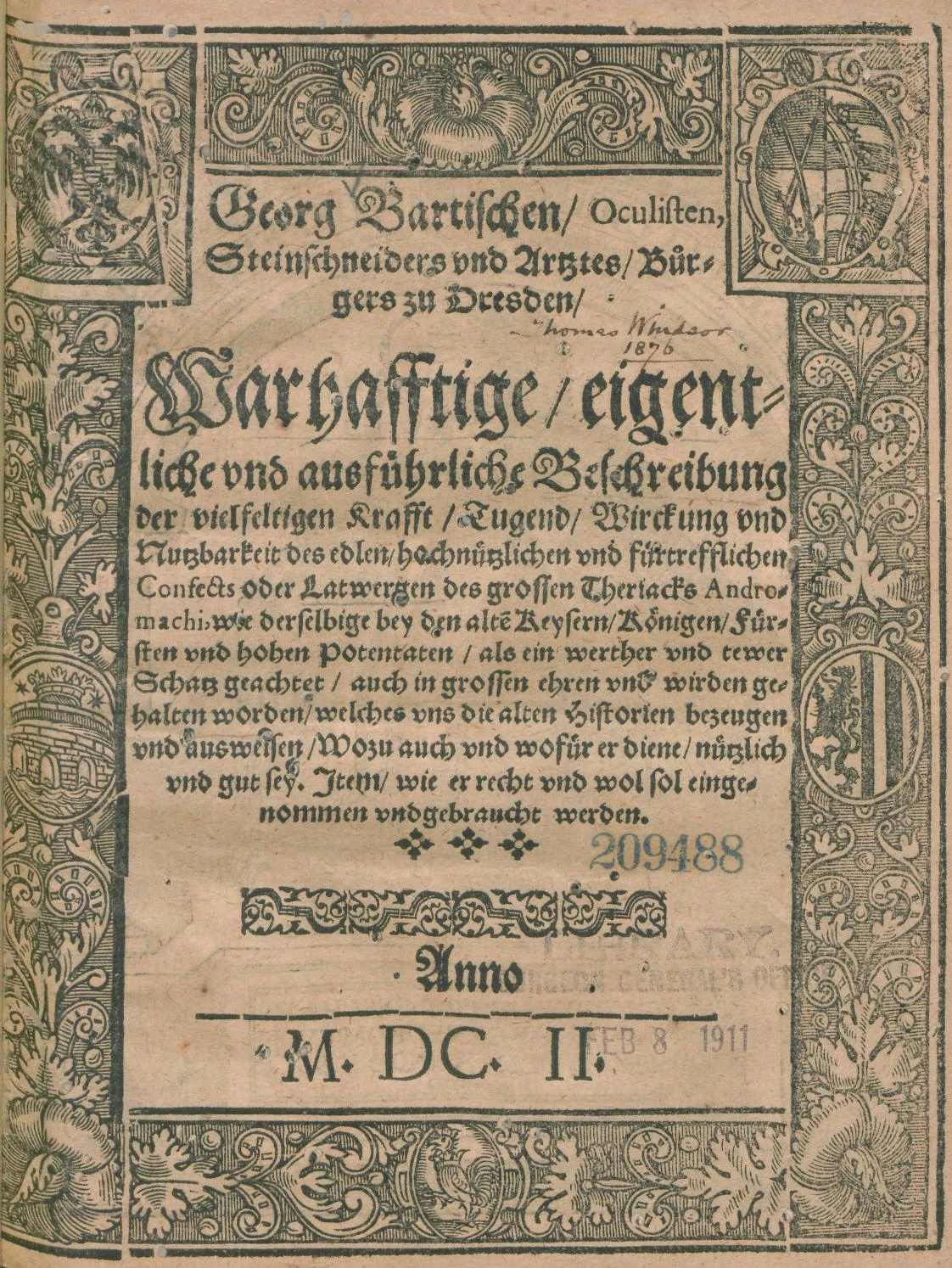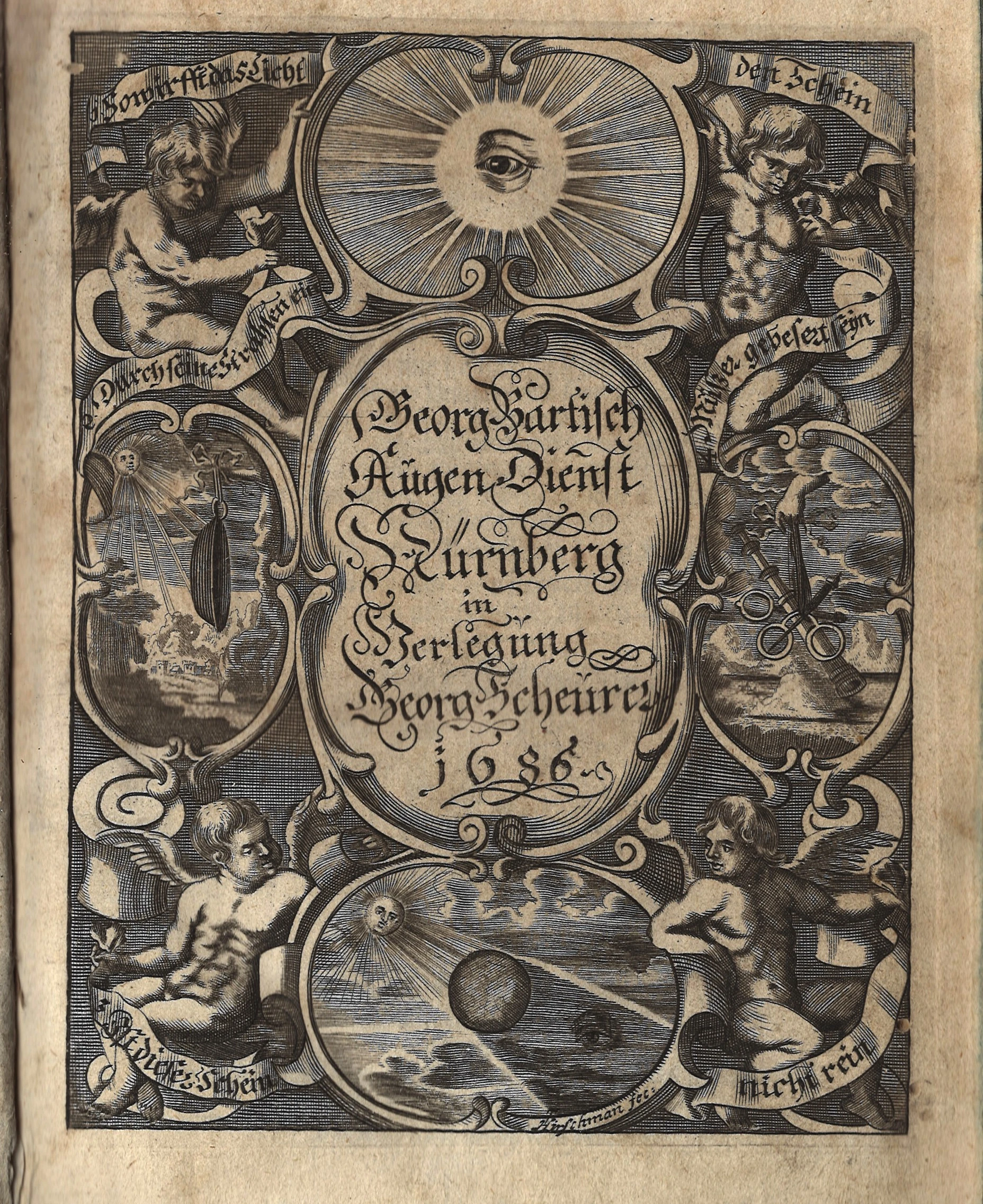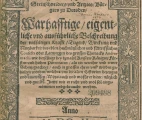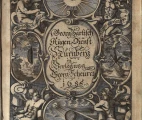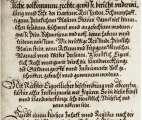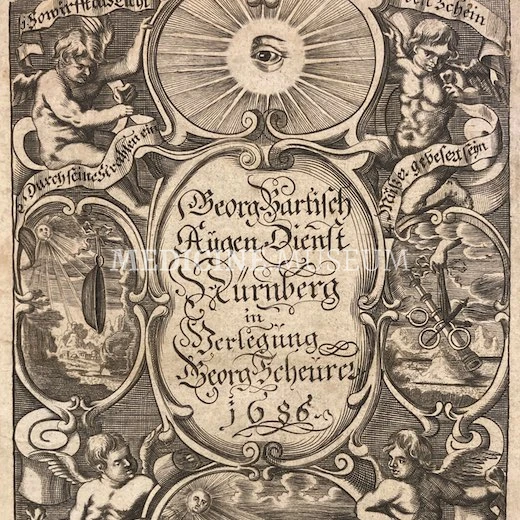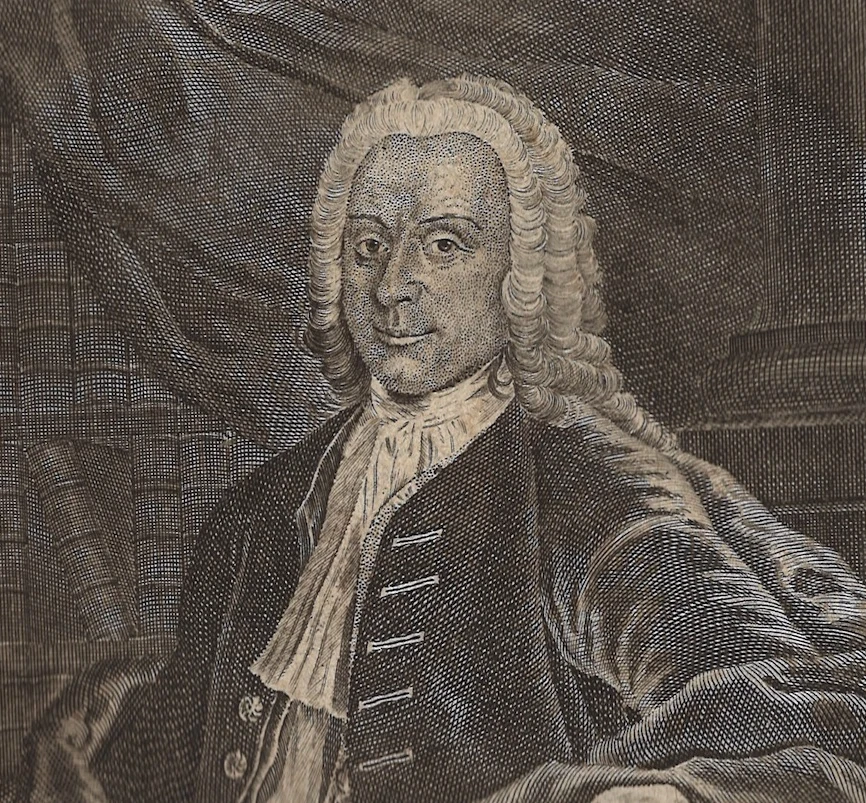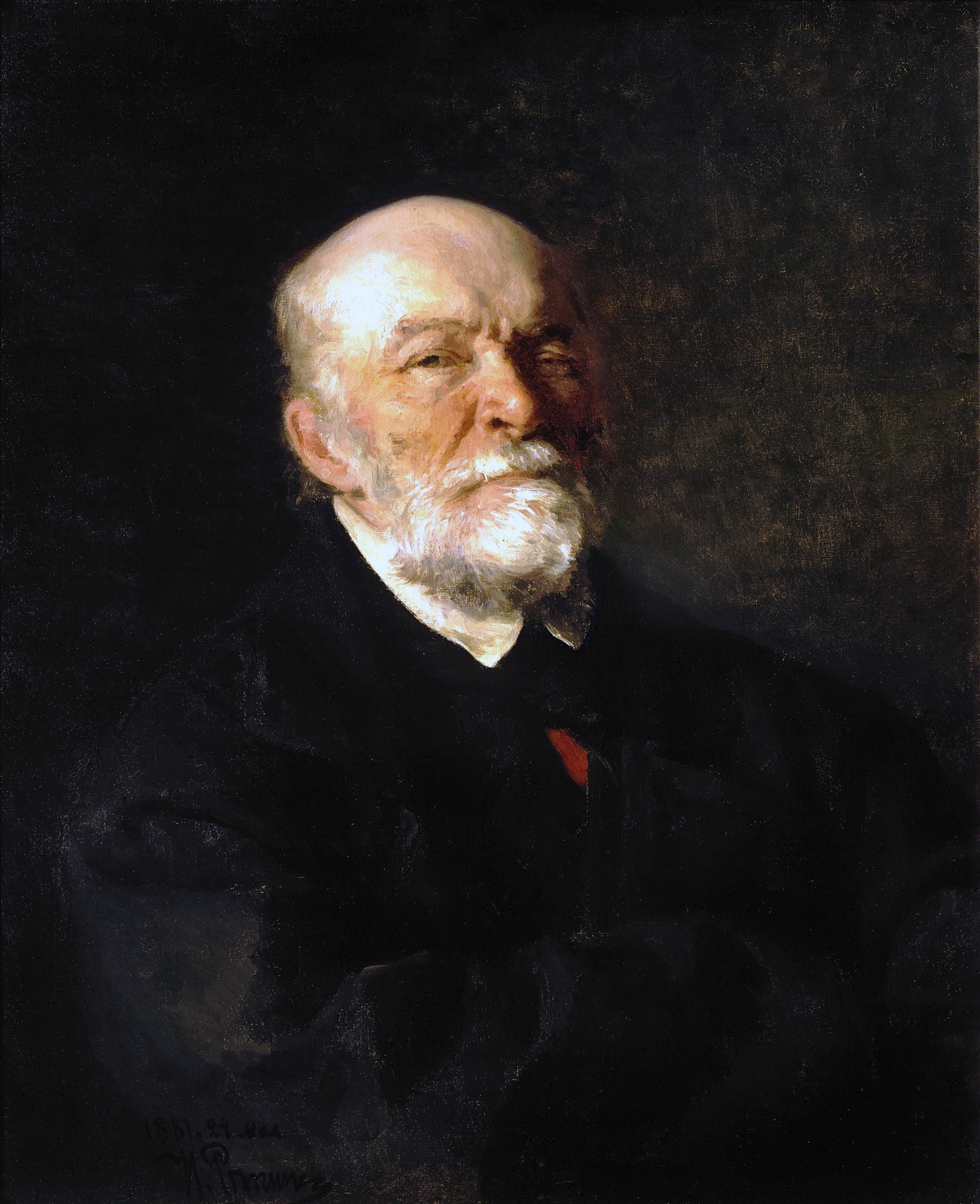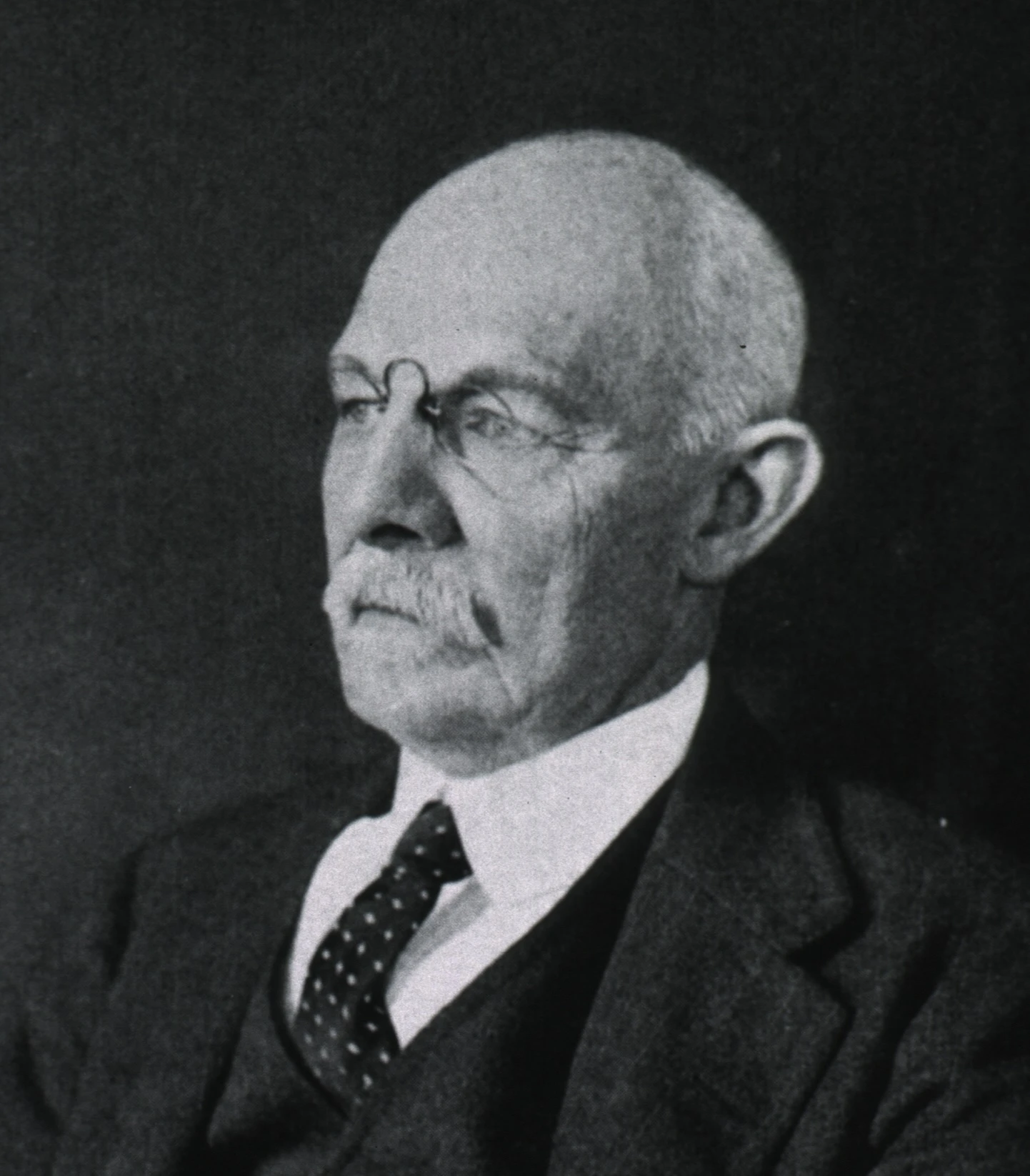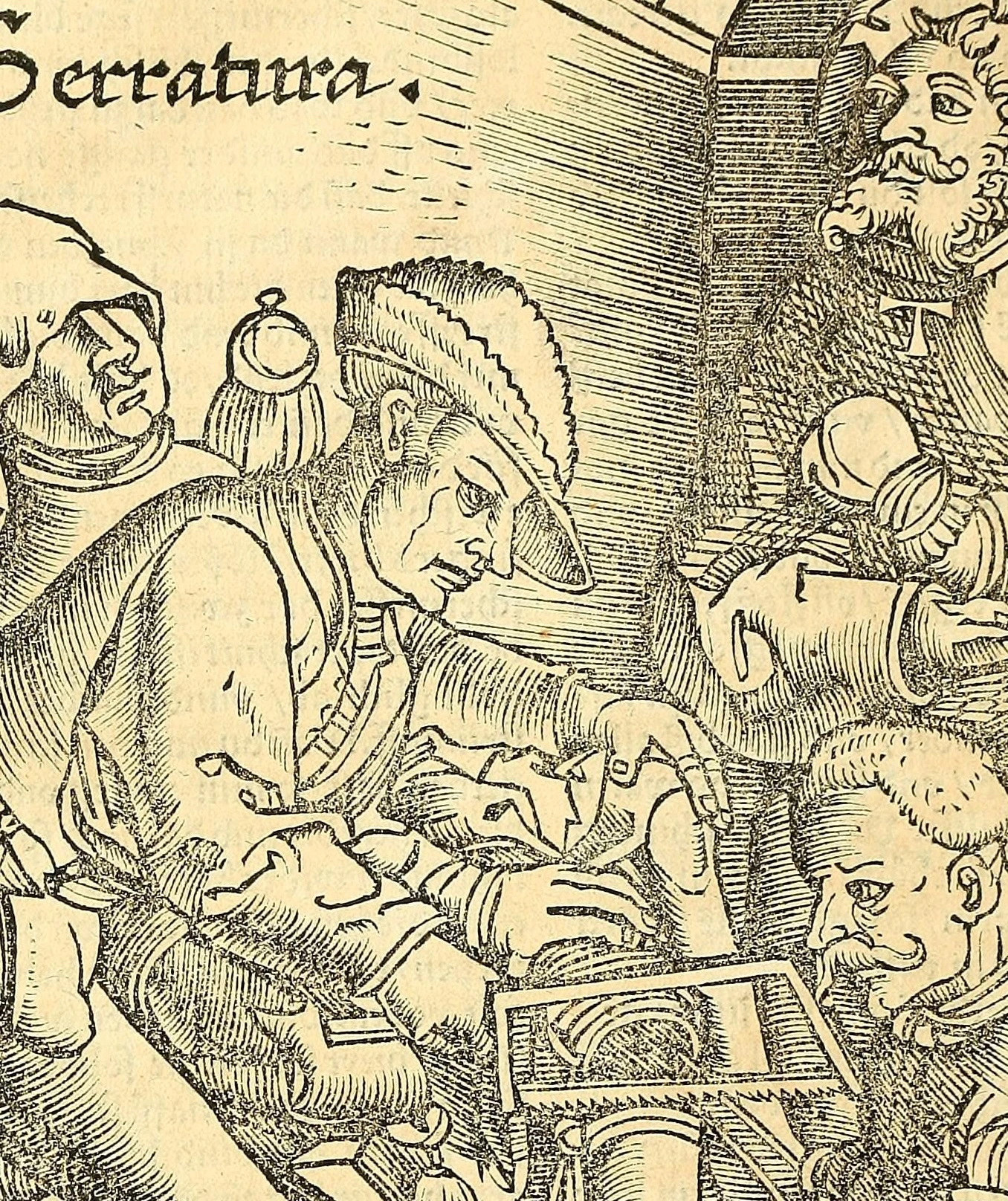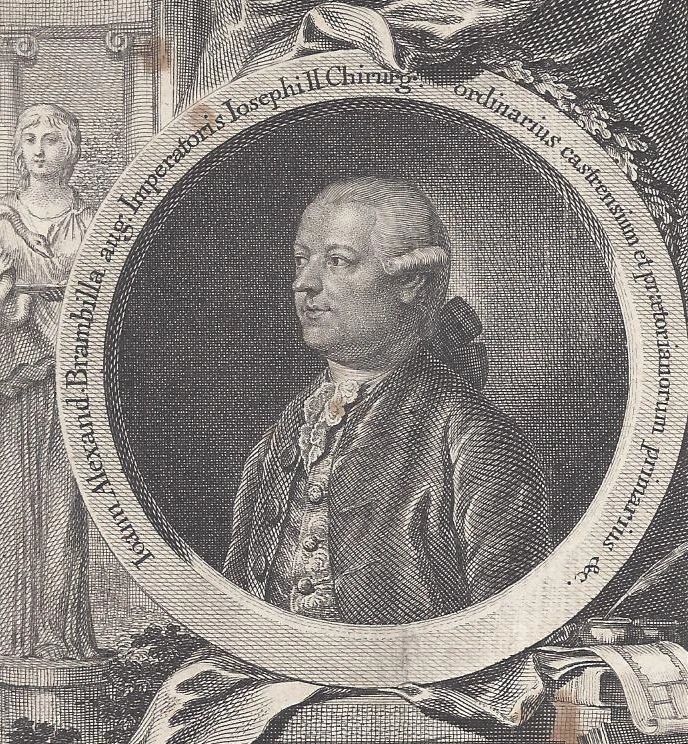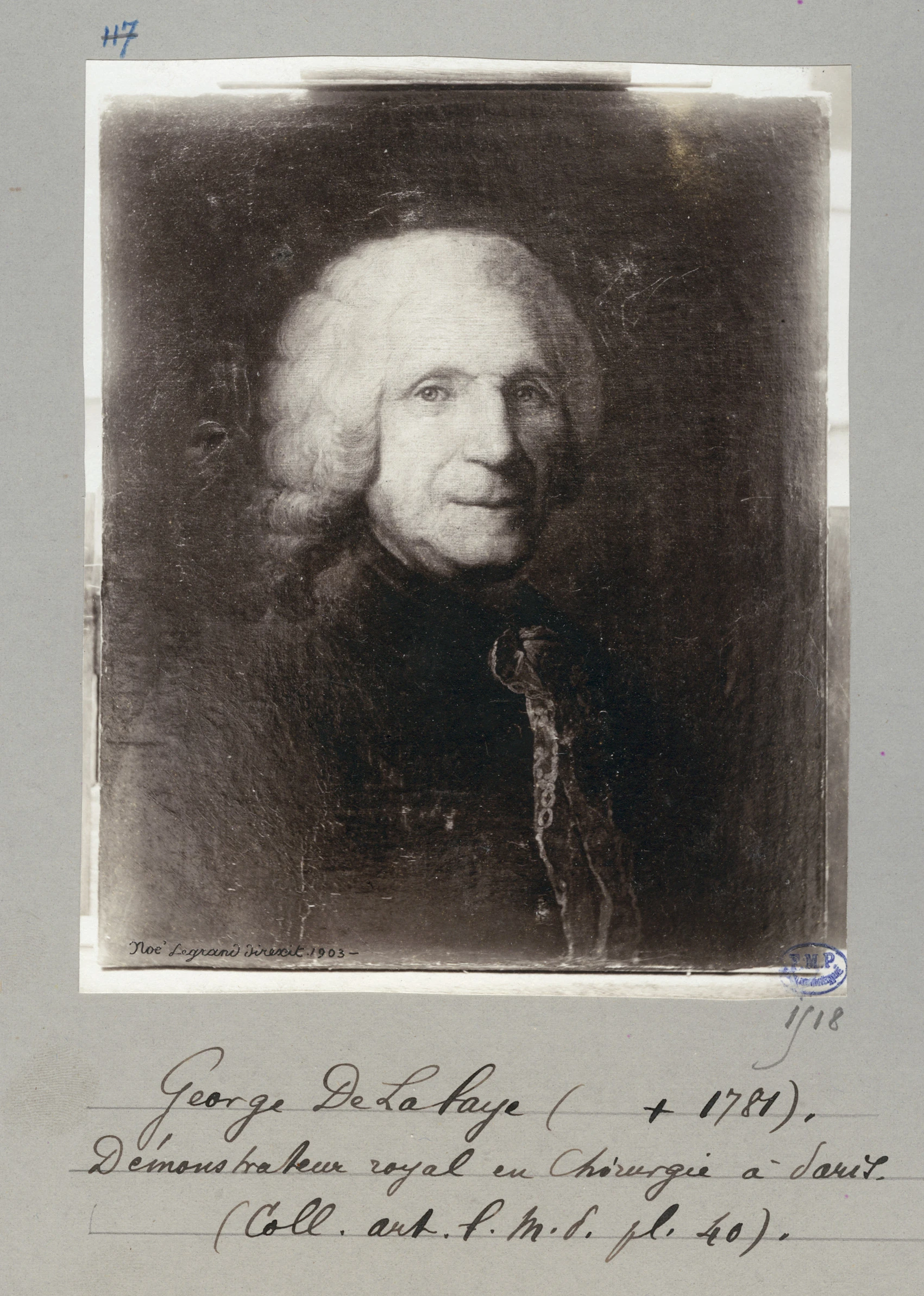Bartisch, Georg
Georg Bartisch (1535–ca.1607), famous German barber-surgeon, founder of modern ophthalmology.
Life
Georg Bartisch, born in 1535 in Gräfenhain near Dresden, Saxony, Germany. The son of a surgeon worked in Königsbrück, Bartisch had a modest upbringing. He developed an early interest in medicine but, lacking the means for higher education, apprenticed with three barber surgeons at age 12 (or 13). His certificates stated that he was apprenticed to Matthäus Fuchs in Wittenberg for two years and to A. Mayscheider in Schönwaldt near Brünn, where he developed into an important oculist (Starstecher makeing cataract couching), "stone cutter" (Steinschneider), "incision-doctor" (Schnittarzt) and wound-doctor (Wundarzt) without academic training.
Urology
Even though he became famous as an author of the classic ophthalmic disease work, he was the author of the oldest documented source on transperineal bladder stone removal (lithotomy) in Germany; in fact, it is the first manual on bladder stone cutting in German language. His manuscript dated 1575 remained unknown for a long time. It was only in 1893 that Prof. Hermann Cohn (1838-1906), an ophthalmologist from Breslau, accidentally came across the manuscript of Georg Bartisch and gave it to the Berlin urologist Otto Mankiewicz (1871-1918), who published it in 1905 under the title "Dresden Manuscript". The description speaks to the considerable experience of its author, gained during 28 years of practice as a professional. Georg Bartisch has successfully operated on about 450 patients suffering from bladder stones. The work, which also contains illustrations, testifies to Bartisch's high level of technical understanding and his skills as a surgeon. He ranks alongside Ambroise Paré (1510-1590), Pierre Franco (1505-1578), Jacques Guillemeau (1550-1613), Fabry von Hilden (1560-1634) and other renowned contemporary European surgeons. His manuscript was respectfully submitted to the Elector Augustus of Saxony for publication, but he did not give the further approval by some reasons and the work remained "under wraps".
Ophthalmology
So the next time Georg Bartisch did something different with his new work. n 1583 in Dresden, Bartisch, who did not speak Latin but was probably assisted by a co-author well versed in theology and ancient languages, wrote "Ophthalmodouleia, That is the Service of the Eyes..." – the first comprehensive European textbook on ophthalmology, which he dedicated to his patron, the Elector Augustus of Saxony (The Duke Augustus I of Saxony). Elector August rewarded Bartisch with 25 florins for his dedication of Ophthalmodouleia, so the author coudl invest them into the publication and had it printed at his own expense. Thus, eye disease book did not repeat the poor destiny of the urological manuscript.
Beeing a surgeon without university degree (like Amroise Paré), in order to settle in Dresden and be accepted as a citizen, he had to present certificates proving his professional achievements. They were issued by 59 city councils and fill 25 printed pages in the Ophthalmoduleia. Interestingly, he spent a considerable portion of his life plying his trade in various countries, eventually settling in Dresden, where he became court oculist to Duke Augustus I of Saxony in 1588, five years after the successful publication of his Eye Service book.
This book made him famous on the European level, it was the first systematic work on eye diseases and surgery, establishing ophthalmology as a distinct field. It included detailed descriptions of various eye diseases and their treatments, both herbal and surgical. He described eyes in 1583 as ‘the most necessary, noblest, clearest, and most subtile member above all others’ in the human body. ‘Remedying the eye is not a lowly or evil craft. Rather it is a marvelous and noble gift of God that is given and awarded to mankind out of pure Godly grace…. This is only in so far as the craft is learned, practiced, and used in a Christian, orderly, and appropriate way’, wrote the author. Bartisch was opposed to the use of spectacles, unable to comprehend how they could improve vision. His book, rich with woodcut illustrations, covered topics like strabismus, cataracts, and eye anatomy, making significant contributions to the field of ophthalmology. The importance of this book was demonstrated by posthumous second elaborated publishing over a century after under the title Augen-Dienst: Oder Kurtz und deutlich verfasster Bericht von allen und jeden in- und äusserlichen Mängeln Schäden Gebrechen und Zufällen der Augen (Dresden, 1686).
Bartisch was a multi-talented person and, among of others, could nicely draw. It was him, who created aquarelle drawings for all his books. Bartisch's "Ophthalmic works" was the first to present ophthalmology in illustrations as an integral part of the text (woodcuts, by H.H. - presumably Hans Hewamaul, after watercolor drawings by the author). He had developed his own instruments for this purpose, which were later improved by Wilhelm Fabry (Fabricius Hildanus, Fabry von Hilden). Bartisch was the first to publish the surgical removal (extirpation or enucleation) of an eyeball for the treatment of a severe form of protrusio bulbi. He divides the starlings, whose surgical treatment is only one of the focal points of Bartisch's Manual of Ophthalmology, into white, blue, green, grey, yellow and black starlings according to their color.
Publications by Georg Bartisch
- Kunstbuch darinnen ist der ganze gründliche, vollkommene und rechte Bericht ... durch Georgium Bartisch, von Königesbrucht, Oculist, Schnitt und Wund Arzt... Dresden 1575." Bartisch, Georg. Dresden, 1575, manuscript (Art book in it is the whole thorough, perfect and right report ... by Georgium Bartisch, von Königesbrucht, Oculist, Schnitt und Wund Arzt... Dresden 1575). The oldest documented source on transperineal bladder stone removal (lithotomy) in Germany.
- Ophthalmodouleia / Das ist / Augendienst. Newer und wolgegründter Bericht von Ursachen und Erkentnus aller Gebrechen / Schäden und Mängel der Augen und des Gesichtes... durch George Bartisch von Königsbrück. Bartisch, Georg. Dresden, 1583. Publisher: Matthes Stöckel. Language: German. English title: Ophthalmodouleia / That is / the Eye Service. A Recent and Subsequent Report on the Causes and Discovery of all Ailments / Damage and Defects of the Eyes and Dace... by George Bartisch of Königsbrück. A copis are avalable at the Bibliothèque interuniversitaire de santé, Paris; at the Library of the University of California, Los Angeles, CA, USA.
- Testimonia wie er mit innerlichen und äusserlichen Caren vielen Menschen gerathen. Georg Bartisch, Dresden, 1599. (Albertus von Haller erwähnt diese Schrift von Bartisch in seiner Bibliotheca chirurgica, Bernae 1774. 4. Tom. I. p. 244).
- Warhafftige, eigentliche vnd ausführliche Beschreibung der vielfeltigen Krafft, Tugend, Wirckung vnd Nutzbarkeit des edlen hochnützlichen vnd fürtrefflichen Confects oder Latwergen des grossen Theriacks Andromachi, wie derselbe bei seinen alten Zeiten/Königen/Fürsten und hohem Potentaten als ein werther und teurer Schatz geachtet, auch in großen Ehren und wirden gehalten worden, welches uns die alten Historien bezeugen und ausweisen. Wozu auch und wofür er diene, nützlich und gut sei. Item, wie er recht und wol sol eingenommen und gebraucht werden. Anno 1602. The book "A thorough, accurate and detailed description of the manifold power, virtue, effect and usefulness of the noble, highly useful and excellent confect or latwergen of the great Theriack Andromachi, as it was regarded as a valuable and precious treasure by his ancient times/kings/princes and high potentates, and was also held in great honor and dignity, as the ancient histories testify and show us. To what end and for what purpose it serves, is useful and good. Item, how it should be taken and used rightly and well" by Bartisch, George, (1535-1607). Language: German. Book is available in the U.S. National Library of Medicine.
- Augen-Dienst: Oder Kurtz und deutlich verfasster Bericht von allen und jeden in- und äusserlichen Mängeln Schäden Gebrechen und Zufällen der Augen, by Bartisch, Georg. Dresden, 1686. Georg Bartisch, posthumous publication. Edited by Abraham Lichtenthaler, Published by Georg Scheurer, Nuremberg (Nürnberg), 1686. Format: 4°. Language: German. Copies are available at the Bibliothèque interuniversitaire de santé, Paris and Bayerische Staatsbibliothek, München, German
References
- Berger, S., “Georg Bartisch’s Ophthalmodouleia and His Theory of Painting and Drawing”, Early Science and Medicine, 26 (2021), 1-54.
- Lowe, Ronald F. Georg Bartisch: Ophthalmodouleja, der Augendienst, 1583. A treatise on service of the eyes and a review of the chapter on strabismus. Australian and New Zealand Journal of Opbtbalrnology (1997) 25,295-298 History of Ophthalmology.
- Staub, Wolfgang. The first German textbook of ophthalmology "Augendienst" by G. Bartisch, 1583. Documenta Ophthalmologica 68:105-114 (1988)
- Zhao, Wenrui. Serving the Eye, Serving the Soul: Religion and Healing in Georg Bartisch’s Ophthalmodouleia (1583). The search for wellbeing and health (Archaeopress 2023): 80–97

